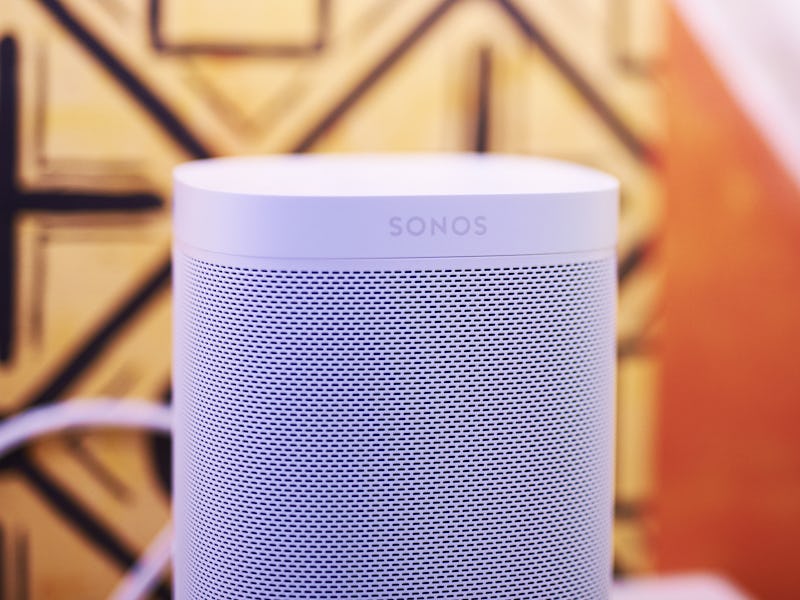Tech
Here's how Sonos is keeping 'legacy' devices working. There's just one catch.
Every Sonos owner is going to have to read this very carefully.

The Sonos backlash has been deafening since late last year when the company thought it would be fine to brick devices when users putting them in "recycle mode" for trade-up toward new ones. Sonos then caught flak for saying it would end software updates for "legacy" devices (products dating back to 2005), which users misunderstood as an expiration date. Now, months after CEO Patrick Spence penned an apology letter, the company is detailing how users will be able to keep their legacy devices working indefinitely.
Put your reading glasses on because this could get confusing. Furthermore, if you're a Sonos user you should bookmark this page for future reference or risk breaking compatibility between different generations of Sonos devices.
So a quick refresher on what's considered a legacy Sonos device:
- Connect
- Connect:Amp
- ZP90
- ZP80
- ZP100
- ZP120
- Play:5 (Gen 1)
These are the devices Sonos is discontinuing software updates for. Meaning, they will not get new features. Because they don't have the processing power to do so, which is fair because some are 15 years old. They will, however, continue to get "bug fixes and security patches" which will maintain the functionality of the products, but not add additional features.
Beginning in June 2020, Sonos will maintain two device operating system platforms: S1 and S2. You can think of it as an old and new version of any software.
S2 is the next version of Sonos' software and will come with new features like support for higher-resolution audio and enhanced room grouping. S2 will be pre-installed on all new Sonos devices shipping in May 2020 and beyond; in June, it will be made available as a software update for all current devices, excluding the aforementioned legacy products. The app for all products running S2 will just be called "Sonos."
Now, on to S1. This is the current version of Sonos software that powers legacy (again, non-upgradeable) and current devices (if you don't upgrade them to S2); the current app that controls them will be renamed "Sonos S1 Controller."
As it stands, all Sonos products (legacy and current) are compatible with each another because they run on the same OS (S1). If you own a mix of legacy and current Sonos products and want them to continue to work together, simply do not update the latter to S2 in June or you will break compatibility with legacy devices. If you update, any S2-powered Sonos device will only work with other devices running S2 (devices either updated to it, or where it's been pre-installed as in the case of future Sonos devices).
So where does this leave Sonos users caught in the ugly intersection between old, current, and future products? Sonos offers the following four options:
1. Remove the S1-only products from your system. With only S2 compatible products remaining, you’ll be ready to download the new Sonos app in June.
2. Trade up S1-only products to their S2 compatible equivalents. For customers who choose this option, we continue to offer a 30% discount as part of our Trade Up program.
3. Run your existing system on the S1 app. You’ll still get bug fixes and security patches, and we will work with our partners to keep your music and voice services working for as long as we can.
4. Separate your system into two. We’ll publish detailed instructions for how to do this nearer the time. Unfortunately, it won’t be possible to group an S1 system with an S2 system.
Asking users to leave their devices on S1 (and never get new software features) or update to S2 (and break compatibility) isn't an elegant solution, but at least the options don't render any products nonfunctional. The catch, of course, is that Sonos users will have to be aware of the two OS versions and how they work. I could see many unaware Sonos users accidentally updating their current Sonos products running S1 to S2 only to later realize that they broke compatibility with legacy products.
There will be some inconvenience figuring how to maintain Sonos system(s) moving forward, but it's not a tech problem that's exclusive to Sonos. Other legacy products face similar compatibility dilemmas when new software is, inevitably, introduced and older hardware is no longer able to run it. As much as it sucks to have to make a decision on whether to update or not update old hardware, it's also a good reminder that internet-connected products — even if they just stream music — are more like computers than anything else, and unfortunately that means they don't last forever.